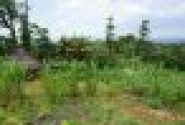
Negotiators within countries need to talk to each other before developing national positions. The Verb/Laura Owsianka
DOHA, Qatar (30 November, 2012)_Country negotiators in the U.N climate change and biodiversity talks need to communicate better before developing their national positions, in order to push the development of environmental and social safeguards for climate mitigation schemes such as REDD+, say experts.
Countries often select civil servants or other experts to act as negotiators at U.N. meetings, however only a handful of the same negotiators attend both the meetings on biodiversity (U.N. Convention on Biological Diversity, or CBD) and climate (U.N. Framework Convention on Climate Change, or UNFCCC).
There is fear that without better coordination between the two bodies, the focus on forests will completely shift to the climate convention, which does not place biodiversity at the core of discussions.
“I can understand a lot of countries have different ministries, a lot of countries have very separate processes, but please talk to each other before drafting national positions [on biodiversity and climate change]. REDD+ can only benefit from sharing expertise,” said Kelly Hertenweg, negotiator for Belgium and expert at the Federal Public Service of Health, Food Chain Safety and Environment.
“Forests are no longer an ecosystem that falls under the mandate of the CBD, they are just a forest carbon stock that falls under the mandate of the UNFCCC,” said Simone Lovera from the Global Forest Coalition.
This comes following a call from Brazil at this year’s Convention on Biological Diversity (CBD) meeting, asking Parties to streamline their discussions to avoid “creating barriers to REDD+ rather than [using] it to its full objective.”
According to Tony La Vina, Dean of the Ateneo School of Government and facilitator of REDD+ negotiations for the UNFCCC, one issue being keenly affected is the delayed development of environmental and social safeguards for climate mitigation schemes such as REDD+.
“UNFCCC and CBD are independently developing advice and guidance on REDD+ and safeguards. We believe that the parties and stakeholders alike would benefit from synergistic guidance…it doesn’t really help to have separate plans,” he said.
Reducing Emissions from Deforestation and Forest Degradation (REDD+) is a scheme housed under the UN Framework Convention on Climate Change (UNFCCC), which aims to mitigate the effects of climate change by financially rewarding developing countries to keep their trees standing (and their carbon stored in forests).
However when trees are valued only for their potential to sequester climate-changing greenhouse gases, they become merely bundles of “carbon sticks,” said Robert Nasi, director of the CGIAR Research Programme on Forests, Trees and Agroforestry.
“The greatest value of REDD+ comes from the largely overlooked indirect benefits such as improved governance and infrastructure provision,” he said.
To address issues of forest governance, respect for indigenous rights, protection of natural biodiversity and emission displacement (leakage) under REDD+, seven safeguards were put in place following the 2010 UN Climate talks in Cancun, Mexico.
While these have been developed at subsequent COPs, experts at last year’s climate conference in Durban expressed disappointment in the “very weak” text on REDD+ safeguard information systems (SIS) aiming to protect local communities, indigenous peoples and biodiversity. The text reduced requirements from collecting data and measuring impacts of REDD+ to merely reporting how developers implement safeguard measures (see the text here).
Safeguards have become merely principles to adhere to, said Louis Verchot, a senior climate scientist with the Center for International Forestry Research.
“If we’re performing or not performing, it’s not going to matter, because we’re not going to measure it.”
In October of this year, the CBD drafted advice to REDD+ negotiators attending this week’s UN climate talks in Doha (page 130) to discuss a basic biodiversity risk identification and risk mitigation process for national REDD+ activities.
The CBD’s advice warns against the conversion of natural forest to plantations; afforestation in areas of high biodiversity value; lack of tangible benefits to indigenous and local communities and lack of equitable benefit-sharing and; the loss of traditional knowledge.
“This [CBD text] is quite relevant for discussions [in Doha] so there is no reason not to have a reference to the CBD text. It would be a first [for this to happen] because in general, and it was very strongly expressed by Brazil, [the CBD] don’t interfere in UNFCCC processes,” said Hertenweg.
Both private sector players and countries at the phase II level of REDD+ are looking for strong decisions on biodiversity and governance safeguards to both generate and protect investments in REDD+.
However safeguards is “not an area where we are not going to see much progress [at Doha] until things like financing have been addressed,” Verchot said.
A final decision on timing and frequency of reporting on Safeguard Information Systems (SIS) is on the agenda at this week’s discussions at Doha.
With additional reporting by Vanessa Reid.
We want you to share Forests News content, which is licensed under Creative Commons Attribution-NonCommercial-ShareAlike 4.0 International (CC BY-NC-SA 4.0). This means you are free to redistribute our material for non-commercial purposes. All we ask is that you give Forests News appropriate credit and link to the original Forests News content, indicate if changes were made, and distribute your contributions under the same Creative Commons license. You must notify Forests News if you repost, reprint or reuse our materials by contacting forestsnews@cifor-icraf.org.












